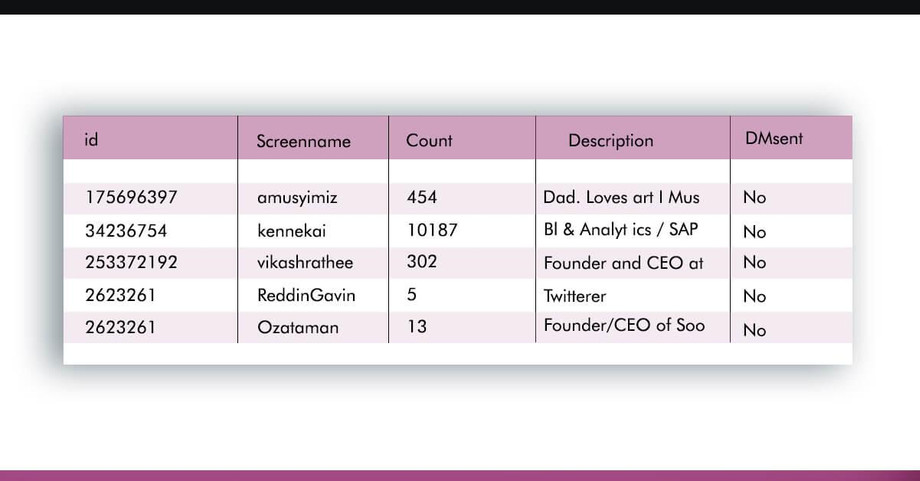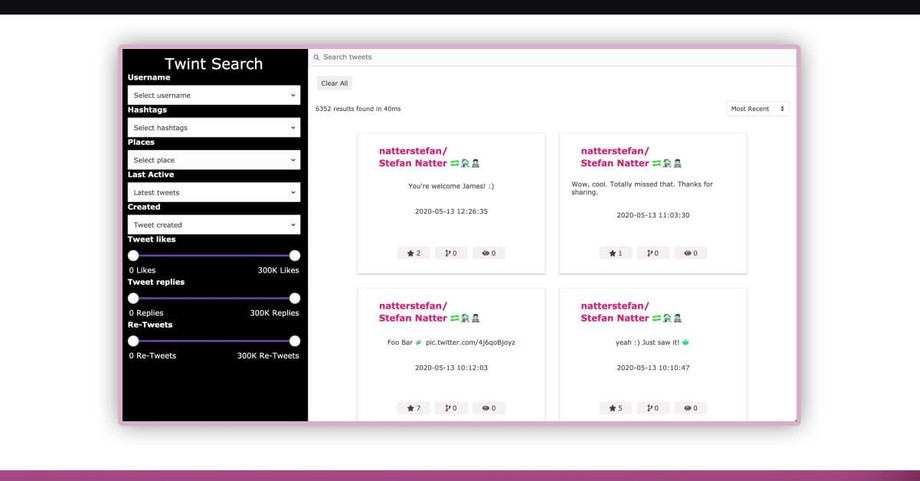In this blog, you will learn about how to scrape Twitter information without using Twitter API or without using a single line of code.
You can use a web scraping tool, for extracting information from Twitter. Web scraping tool allows you to fetch all the data from a website such as Twitter, as it replicates human interaction with a webpage.
You can easily extract Tweet from a handler, tweets with specific hashtags, tweets posted over a certain time window, and so on. Simply copy the URL of your desired webpage and put it into the web scraping tool built-in browser. You will be able to develop a crawler from the initial concept with just a few point-and-clicks.
Once the extraction is finished, you will be able to export the information into excel sheets, CSV, HTML, SQL, or you can also feed it into your database.
Installation
You can execute “twint” inside the docker, also it is possible to install it directly onto your PC using three options.
Git:
Pip:
Pipenv:
Usage:
After installing “twint” you can scrape your tweets and save the conclusion in a .csv file using the following command.
After execution, the result will be displayed as follows:
You can also use other options for executing with “twint”
Docker is used to run “twint”, but if you want to install it directly on your PC, you have a few options:
Twint-search is a good UI for searching your tweets. You will learn how to scrape tweets with Docker, save them to Elasticsearch, then explore the result with twint-search in the next step.
To begin, clone the twint-docker repository as follows:
Finally, it becomes possible to spin up the docker containers
Once everything is fully operational, use the following command to scrape tweets from a person and save them to a.csv file:
The task’s output would be stored in the $PWD/twint mounted directory. Which is essentially the twint subfolder’s current path.
To complete the command, the number of tweets from the given account must be reached. With ls -lha./twint/file.csv, you should be able to analyze the data once it’s finished.
With docker-compose run -v $PWD/twint:/opt/app/data twint, you may now run any supported twint command.
Twint-search allows exploring tweets
We stored the findings in a.csv file in the earlier quote. However, the results can also be saved in Elasticsearch.
To begin, open docker-compose.yml in your preferred editor (mine is VSCode) and solve the current CORS problem until my pull request is merged.
Get ready to start the app
Save the results into Elasticsearch
Now, you can open http://local:3000 and it will display:
You can also explore more tweets:
Contact Scraping Intelligence for any queries.
Know more : http://www.websitescraper.com/scrape-tweets-from-twitter-using-profiles-without-using-twitters-api/



